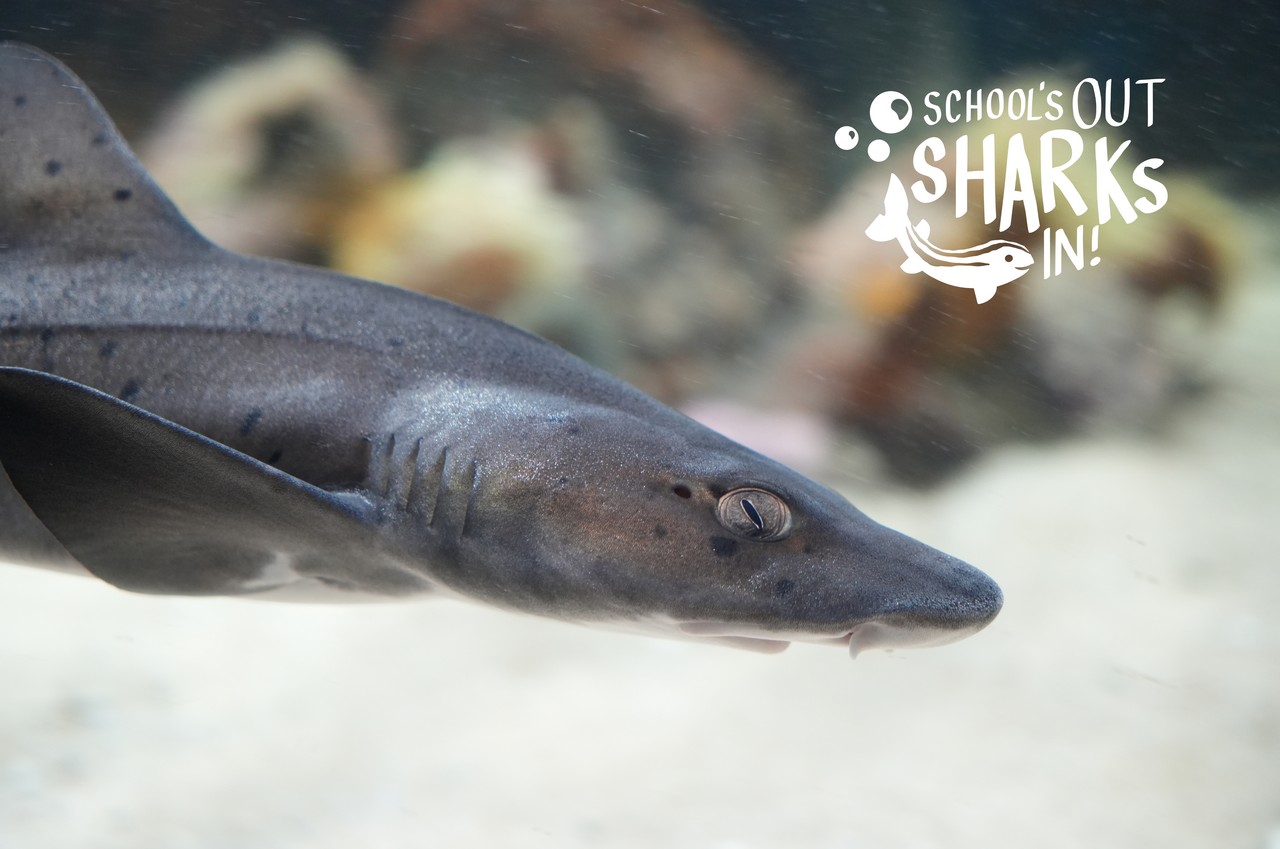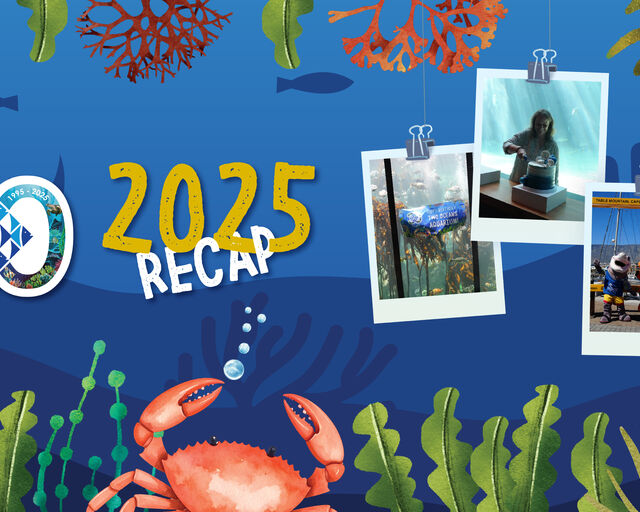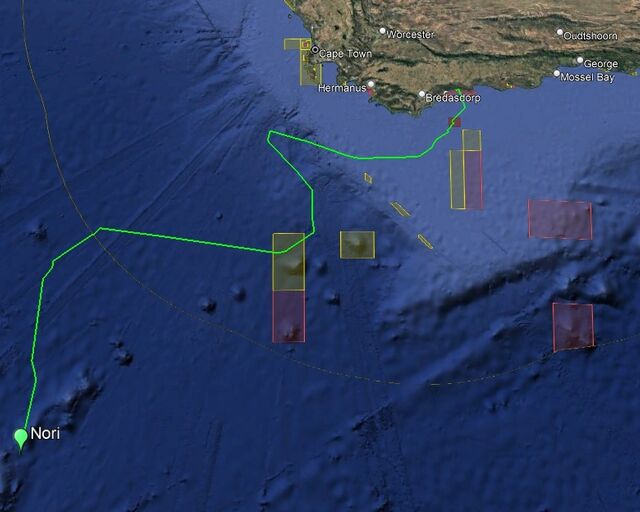This school holiday, we’re diving into the incredible sharks at the Two Oceans Aquarium – big and small.
The Aquarium is home to a remarkable variety of shark species, many of them found only in South African waters. From the iconic ragged-tooth sharks cruising through the Save Our Seas Foundation Shark Exhibit to the elusive puffadder shysharks, visitors are offered a glimpse into the complexity and beauty of these misunderstood animals.
Today, we’re learning all about gully sharks.
What are spotted gully sharks?
Spotted gully sharks (Triakis megalopterus) are grey-brown sharks covered in small, irregularly spaced black spots. These spots become darker and more prominent as the sharks age! They have stout bodies and short, blunt noses with widely spaced nostrils. Their small, tightly packed teeth have a molar-like base perfect for crushing shells, while small, sharp central cusps hook their prey.
Spotted gully sharks are slow to reach sexual maturity, only able to reproduce at about 14 years of age. They are ovoviviparous, meaning that the embryos hatch from eggs inside the uterus, where they feed off their own yolk sacs until they are born. This intermediate gestation phase can take up to two years, before between six and 12 pups are born per litter. It is estimated that spotted gully sharks can live for up to 25 years.
Interestingly, their species name, megalopterus, means “large-finned” in Greek. You can clearly see that their first and second dorsal fins are almost the same size, giving spotted gully sharks their distinctive appearance.
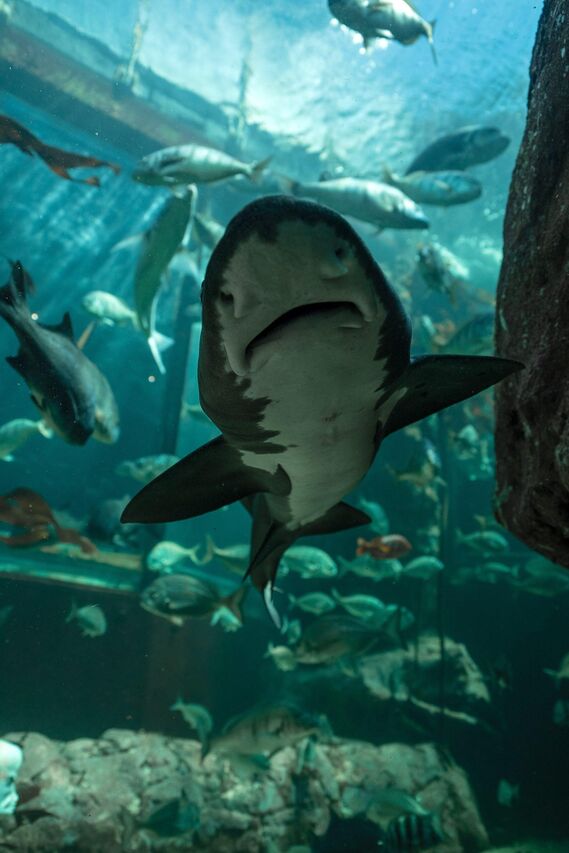
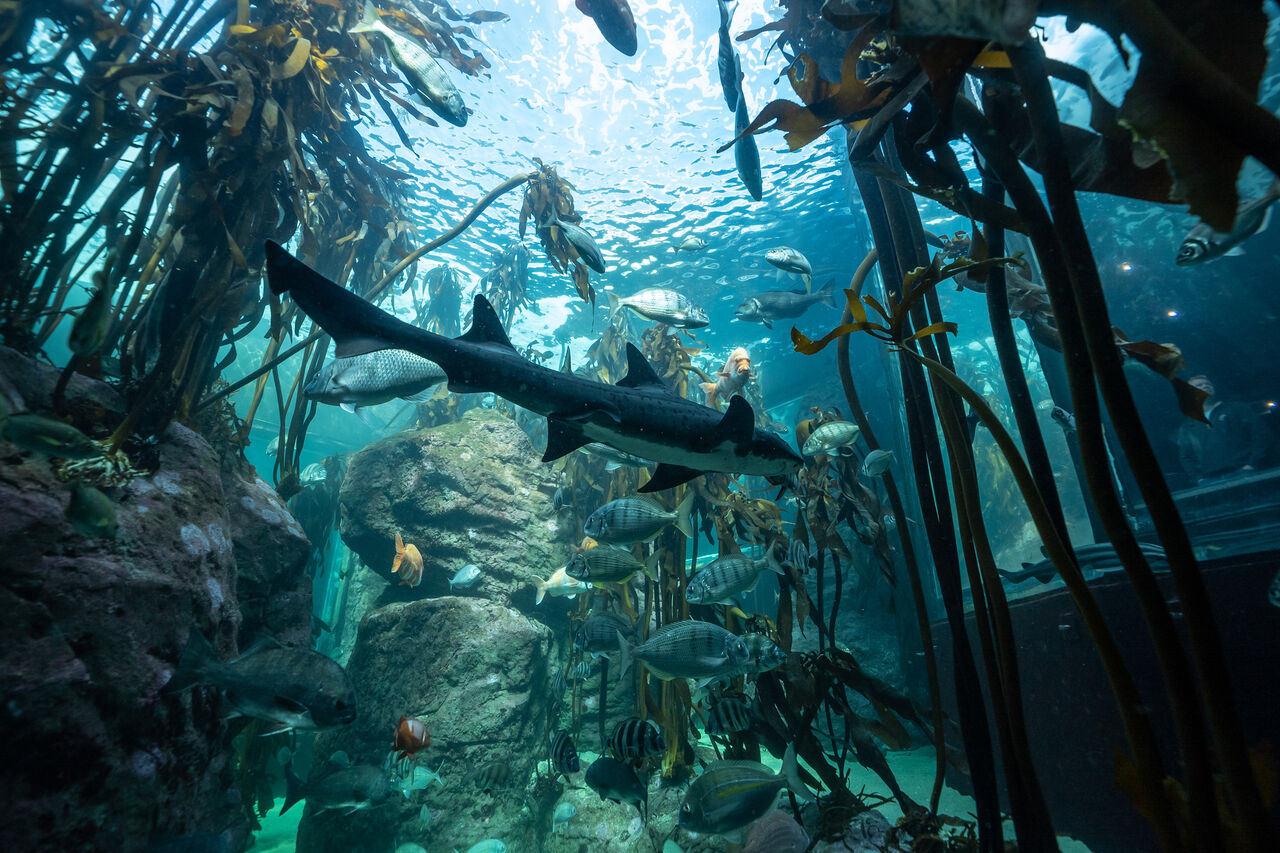
Where do they live?
These pretty sharks are endemic to the southern African coast from Walvis Bay in Namibia to Coffee Bay in the Eastern Cape. In fact, they’re a popular sighting for free divers and scuba divers alike. They inhabit sandy and rocky coastal reefs and gullies up to depths of 50m but are most commonly spotted in shallower waters of 10m.
Spotted gully sharks are a highly active species – on the rare occasion that they are seen resting, they are found inside rocky crevices. Mainly active at night, spotted gully sharks feed on crustaceans like crabs, cephalopods, and small fish. Sometimes, larger gully sharks will even prey on other sharks and rays, or even their eggs. Interestingly, their prey species changes with age: Younger gully sharks will eat mostly crabs, while the older sharks hunt trickier prey like octopus and bony fish. They generally swim just above the seafloor, favouring the variety of prey species that can be found in these areas. They have even been known to pursue prey almost to shore!
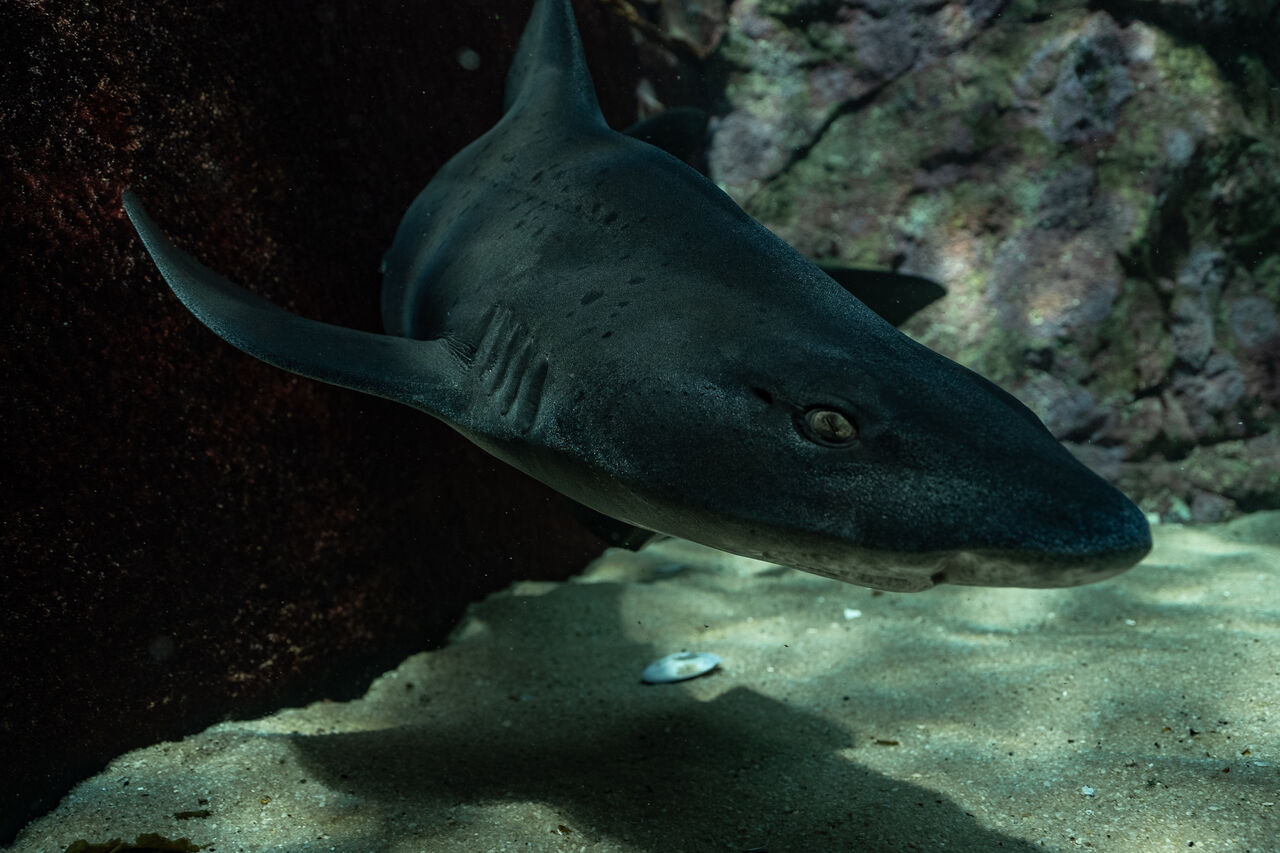
Are they threatened?
The IUCN’s Red List of Threatened Species lists spotted gully sharks as of least concern. This is largely because, while the species is recreationally fished, they are mostly released and have a low post-release mortality rate. Commercial fishing for spotted gully sharks is prohibited in South Africa. Encouragingly, in the De Hoop Marine Protected Area, spotted gully sharks appear to have increased in population over the past three generations. This is true of several areas across their range and, as a result, spotted gully shark populations are considered stable.
Notably, spotted gully sharks are susceptible to overfishing because of their slow growth rate, long gestation period, and short reproductive cycle. It is therefore encouraging that their populations are not currently threatened.
Spotted gully sharks play an important role within their ecosystems across southern Africa, and are certainly a beautiful sight gliding through our Kelp Forest and Cold Reef Exhibits.
Related News
Sign up to our Newsletter
Receive monthly news, online courses and conservation programmes.
